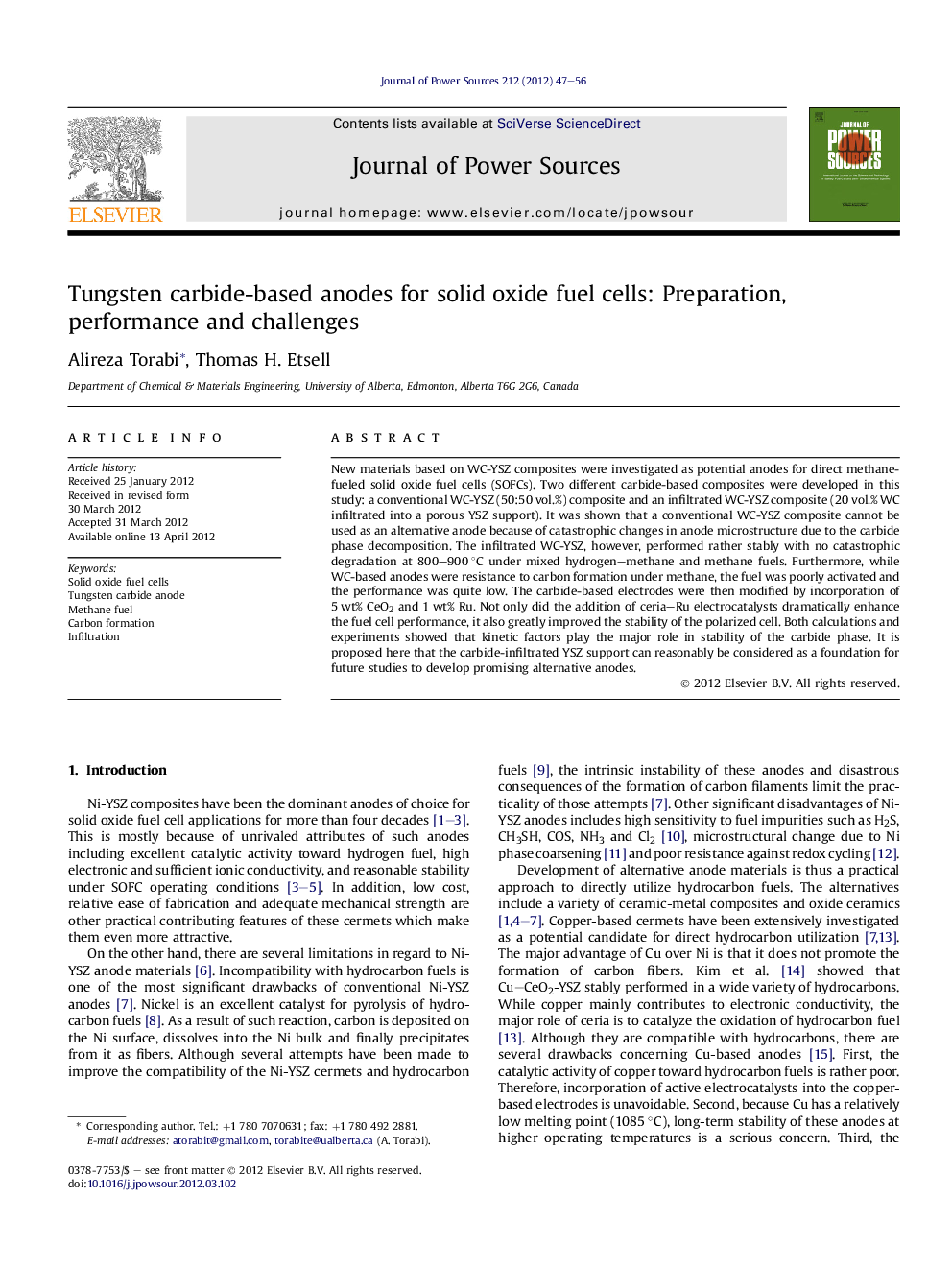| Article ID | Journal | Published Year | Pages | File Type |
|---|---|---|---|---|
| 1288454 | Journal of Power Sources | 2012 | 10 Pages |
New materials based on WC-YSZ composites were investigated as potential anodes for direct methane-fueled solid oxide fuel cells (SOFCs). Two different carbide-based composites were developed in this study: a conventional WC-YSZ (50:50 vol.%) composite and an infiltrated WC-YSZ composite (20 vol.% WC infiltrated into a porous YSZ support). It was shown that a conventional WC-YSZ composite cannot be used as an alternative anode because of catastrophic changes in anode microstructure due to the carbide phase decomposition. The infiltrated WC-YSZ, however, performed rather stably with no catastrophic degradation at 800–900 °C under mixed hydrogen–methane and methane fuels. Furthermore, while WC-based anodes were resistance to carbon formation under methane, the fuel was poorly activated and the performance was quite low. The carbide-based electrodes were then modified by incorporation of 5 wt% CeO2 and 1 wt% Ru. Not only did the addition of ceria–Ru electrocatalysts dramatically enhance the fuel cell performance, it also greatly improved the stability of the polarized cell. Both calculations and experiments showed that kinetic factors play the major role in stability of the carbide phase. It is proposed here that the carbide-infiltrated YSZ support can reasonably be considered as a foundation for future studies to develop promising alternative anodes.
► WC-based anodes for direct utilization of methane in SOFCs. ► WC-YSZ anodes do not show satisfactory and steady performance under methane. ► Ru–ceria modified WC-based anodes perform reasonably and stably under methane.
